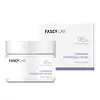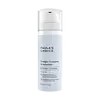What's inside
What's inside
 Key Ingredients
Key Ingredients

 Benefits
Benefits

 Concerns
Concerns

 Ingredients Side-by-side
Ingredients Side-by-side

Water
Skin ConditioningButylene Glycol
HumectantGlycerin
HumectantCetearyl Alcohol
EmollientCaprylic/Capric Triglyceride
MaskingPolyglyceryl-3 Stearate
EmulsifyingHydrogenated Poly(C6-14 Olefin)
EmollientButyrospermum Parkii Butter
Skin ConditioningCetearyl Olivate
Propanediol
SolventSimmondsia Chinensis Seed Oil
EmollientSodium Hyaluronate
HumectantCetearyl Glucoside
EmulsifyingC14-22 Alcohols
Emulsion StabilisingCeramide NP
Skin ConditioningAllantoin
Skin ConditioningXanthan Gum
EmulsifyingPhytosphingosine
Skin ConditioningCarbomer
Emulsion StabilisingGlyceryl Stearate
Emollient1,2-Hexanediol
Skin ConditioningBetaine
HumectantTromethamine
BufferingAmmonium Acryloyldimethyltaurate/Vp Copolymer
Adenosine
Skin ConditioningC12-20 Alkyl Glucoside
EmulsifyingGlucose
HumectantCentella Asiatica Extract
CleansingCymbopogon Citratus Extract
Skin ConditioningBiosaccharide Gum-1
HumectantCaprylyl Glycol
EmollientEthylhexylglycerin
Skin ConditioningDisodium EDTA
Oleic Acid
EmollientWater, Butylene Glycol, Glycerin, Cetearyl Alcohol, Caprylic/Capric Triglyceride, Polyglyceryl-3 Stearate, Hydrogenated Poly(C6-14 Olefin), Butyrospermum Parkii Butter, Cetearyl Olivate, Propanediol, Simmondsia Chinensis Seed Oil, Sodium Hyaluronate, Cetearyl Glucoside, C14-22 Alcohols, Ceramide NP, Allantoin, Xanthan Gum, Phytosphingosine, Carbomer, Glyceryl Stearate, 1,2-Hexanediol, Betaine, Tromethamine, Ammonium Acryloyldimethyltaurate/Vp Copolymer, Adenosine, C12-20 Alkyl Glucoside, Glucose, Centella Asiatica Extract, Cymbopogon Citratus Extract, Biosaccharide Gum-1, Caprylyl Glycol, Ethylhexylglycerin, Disodium EDTA, Oleic Acid
Water
Skin ConditioningButyrospermum Parkii Butter
Skin ConditioningCeteareth-6 Olivate
EmulsifyingButylene Glycol
HumectantC13-15 Alkane
SolventGlycerin
HumectantGlyceryl Stearate
EmollientPolyglyceryl-4 Laurate
EmulsifyingDecyl Oleate
EmollientLinum Usitatissimum Seed Oil
PerfumingSalvia Hispanica Seed Oil
MoisturisingOlea Europaea Fruit Oil
MaskingPassiflora Edulis Seed Oil
EmollientBorago Officinalis Seed Oil
EmollientHydrogenated Olive Oil
Skin ConditioningPsidium Guajava Fruit Extract
AstringentOlea Europaea Oil Unsaponifiables
Skin ConditioningLimnanthes Alba Seed Oil
Skin ConditioningLinoleic Acid
CleansingLinolenic Acid
CleansingOleic Acid
EmollientEuterpe Oleracea Sterols
Skin ConditioningCeramide AP
Skin ConditioningCeramide EOP
Skin ConditioningCeramide NP
Skin ConditioningSerine
MaskingAlanine
MaskingGlycine
BufferingProline
Skin ConditioningLysine Hcl
Skin ConditioningThreonine
Arginine
MaskingSqualane
EmollientCholesterol
EmollientPhytosphingosine
Skin ConditioningAnastatica Hierochuntica Extract
AstringentLecithin
EmollientSodium Hyaluronate
HumectantSodium Lactate
BufferingBoerhavia Diffusa Root Extract
Skin ProtectingAdenosine
Skin ConditioningPhytic Acid
Glutamic Acid
HumectantBetaine
HumectantPullulan
PCA
HumectantSodium PCA
HumectantCarbomer
Emulsion StabilisingSodium Polyacrylate Starch
AbsorbentSclerotium Gum
Emulsion StabilisingXanthan Gum
EmulsifyingSodium Lauroyl Lactylate
EmulsifyingPhenoxyethanol
PreservativeEthylhexylglycerin
Skin ConditioningWater, Butyrospermum Parkii Butter, Ceteareth-6 Olivate, Butylene Glycol, C13-15 Alkane, Glycerin, Glyceryl Stearate, Polyglyceryl-4 Laurate, Decyl Oleate, Linum Usitatissimum Seed Oil, Salvia Hispanica Seed Oil, Olea Europaea Fruit Oil, Passiflora Edulis Seed Oil, Borago Officinalis Seed Oil, Hydrogenated Olive Oil, Psidium Guajava Fruit Extract, Olea Europaea Oil Unsaponifiables, Limnanthes Alba Seed Oil, Linoleic Acid, Linolenic Acid, Oleic Acid, Euterpe Oleracea Sterols, Ceramide AP, Ceramide EOP, Ceramide NP, Serine, Alanine, Glycine, Proline, Lysine Hcl, Threonine, Arginine, Squalane, Cholesterol, Phytosphingosine, Anastatica Hierochuntica Extract, Lecithin, Sodium Hyaluronate, Sodium Lactate, Boerhavia Diffusa Root Extract, Adenosine, Phytic Acid, Glutamic Acid, Betaine, Pullulan, PCA, Sodium PCA, Carbomer, Sodium Polyacrylate Starch, Sclerotium Gum, Xanthan Gum, Sodium Lauroyl Lactylate, Phenoxyethanol, Ethylhexylglycerin
 Reviews
Reviews

Ingredients Explained
These ingredients are found in both products.
Ingredients higher up in an ingredient list are typically present in a larger amount.
Adenosine is in every living organism. It is one of four components in nucleic acids that helps store our DNA.
Adenosine has many benefits when used. These benefits include hydrating the skin, smoothing skin, and reducing wrinkles. Once applied, adenosine increases collagen production. It also helps with improving firmness and tissue repair.
Studies have found adenosine may also help with wound healing.
In skincare products, Adenosine is usually derived from yeast.
Learn more about AdenosineBetaine is a common humectant (a substance that promotes retention of moisture). It's known to be gentle on the skin and can help balance hydration.
This ingredient is best for improving hydration and soothing irritated skin. Studies also show it helps even out skin tone.
Fun fact: Betaine is naturally created in the skin and body. The kind found within cosmetic products can be either plant-derived or synthetic.
Another name for betaine is trimethylglycine.
Learn more about BetaineButylene Glycol (or BG) is used within cosmetic products for a few different reasons:
Overall, Butylene Glycol is a safe and well-rounded ingredient that works well with other ingredients.
Though this ingredient works well with most skin types, some people with sensitive skin may experience a reaction such as allergic rashes, closed comedones, or itchiness.
Learn more about Butylene GlycolThis ingredient is also known as shea butter. It is an effective skin hydrator and emollient.
Emollients help soothe and soften your skin. It does this by creating a protective film on your skin. This barrier helps trap moisture and keeps your skin hydrated. Emollients may be effective at treating dry or itchy skin.
Shea butter is rich in antioxidants. Antioxidants help fight free-radicals, or molecules that may harm the body. It is also full of fatty acids including stearic acid and linoleic acid. These acids help replenish the skin and keep skin moisturized.
While Shea Butter has an SPF rating of about 3-4, it is not a sunscreen replacement.
Shea butter may not be fungal acne safe. We recommend speaking with a professional if you have any concerns.
Learn more about Butyrospermum Parkii ButterCarbomer is a polymer of acrylic acid. Its main role is to create a gel consistency.
A high amount of carbomer can cause pilling or balling up of products. Don't worry, most products contain 1% or less of carbomer.
Ceramide NP is a type of ceramide and formally known as ceramide 3.
Ceramides are intercellular lipids naturally found in our skin that bonds dead skin cells together to create a barrier. They are known for their ability to hold water and thus are a great ingredient for dry skin.
Ceramides are an important building block for our skin barrier. A stronger barrier helps the skin look more firm and hydrated. By bolstering the skin ceramides act as a barrier against irritating ingredients. This can help with inflammation as well.
If you would like to eat ceramides, sweet potatoes contain a small amount.
Read more about other common types of ceramides here:
Ceramide AP
Ceramide EOP
Ethylhexylglycerin (we can't pronounce this either) is commonly used as a preservative and skin softener. It is derived from glyceryl.
You might see Ethylhexylglycerin often paired with other preservatives such as phenoxyethanol. Ethylhexylglycerin has been found to increase the effectiveness of these other preservatives.
Glycerin is already naturally found in your skin. It helps moisturize and protect your skin.
A study from 2016 found glycerin to be more effective as a humectant than AHAs and hyaluronic acid.
As a humectant, it helps the skin stay hydrated by pulling moisture to your skin. The low molecular weight of glycerin allows it to pull moisture into the deeper layers of your skin.
Hydrated skin improves your skin barrier; Your skin barrier helps protect against irritants and bacteria.
Glycerin has also been found to have antimicrobial and antiviral properties. Due to these properties, glycerin is often used in wound and burn treatments.
In cosmetics, glycerin is usually derived from plants such as soybean or palm. However, it can also be sourced from animals, such as tallow or animal fat.
This ingredient is organic, colorless, odorless, and non-toxic.
Glycerin is the name for this ingredient in American English. British English uses Glycerol/Glycerine.
Learn more about GlycerinGlyceryl Stearate is a mix of glycerin and stearic acid.
It is used to stabilize the mixing of water and oil ingredients. By preventing these ingredients from separating, it can help elongate shelf life. It can also help thicken the product's texture.
As an emollient, it helps soften skin and supports barrier-replenishing ingredients.
In cosmetics, Glyceryl Stearate is often made from vegetable oils or synthetically produced.
This ingredient may not be fungal-acne safe
Fun fact: The human body also creates Glyceryl Stearate naturally.
Learn more about Glyceryl StearateOleic Acid is an Omega-9 fatty acid. It can be found in many plant oils such as avocado and marula oils.
This ingredient is used to enhance the texture of products and as a cleansing agent.
Oleic Acid may not be fungal acne safe.
Learn more about Oleic AcidPhytosphingosine is a phospholipid naturally found in our skin as a building block for ceramides.. It helps moisturize, soothe, and protect skin.
Phytosphingosine contributes to your skin's natural moisturizing factor (NMF). The NMF is responsible for hydration, a strong barrier, and plasticity. Our NMF decreases with age. Increasing NMF leads to more healthy and hydrated skin.
Studies show products formulated with NMF ingredients help strengthen our skin's barrier. Having a healthy skin barrier reduces irritation and increases hydration. Our skin barrier is responsible for having plump and firm skin. It also helps protect our skin against infection, allergies, and inflammation.
Fun fact: Phytosphingosine is abundant in plants and fungi.
More ingredients that help boost collagen in skin:
Learn more about PhytosphingosineSodium Hyaluronate is hyaluronic acid's salt form. It is commonly derived from the sodium salt of hyaluronic acid.
Like hyaluronic acid, it is great at holding water and acts as a humectant. This makes it a great skin hydrating ingredient.
Sodium Hyaluronate is naturally occurring in our bodies and is mostly found in eye fluid and joints.
These are some other common types of Hyaluronic Acid:
Learn more about Sodium HyaluronateWater. It's the most common cosmetic ingredient of all. You'll usually see it at the top of ingredient lists, meaning that it makes up the largest part of the product.
So why is it so popular? Water most often acts as a solvent - this means that it helps dissolve other ingredients into the formulation.
You'll also recognize water as that liquid we all need to stay alive. If you see this, drink a glass of water. Stay hydrated!
Learn more about WaterXanthan gum is used as a stabilizer and thickener within cosmetic products. It helps give products a sticky, thick feeling - preventing them from being too runny.
On the technical side of things, xanthan gum is a polysaccharide - a combination consisting of multiple sugar molecules bonded together.
Xanthan gum is a pretty common and great ingredient. It is a natural, non-toxic, non-irritating ingredient that is also commonly used in food products.
Learn more about Xanthan Gum